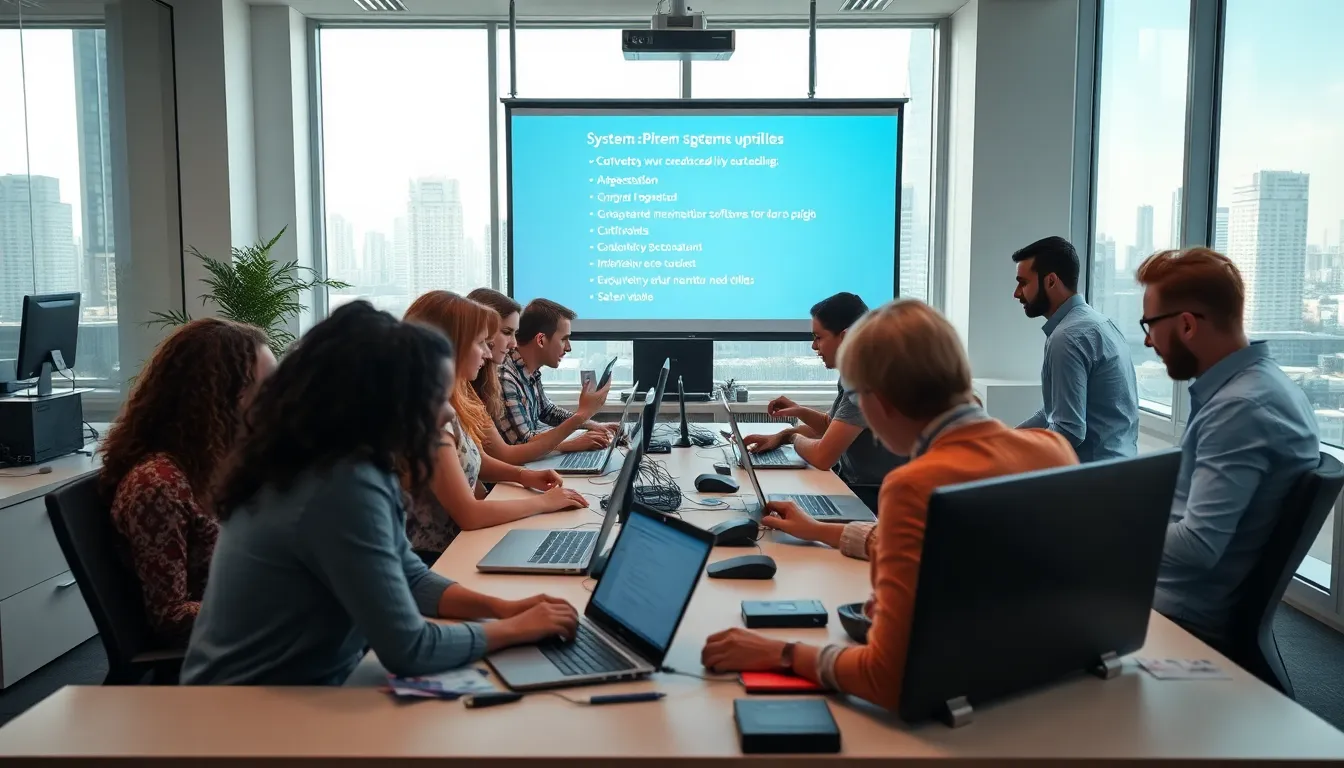Upgrading the immorpos35.3 to new software can feel like preparing for a blind date—exciting yet nerve-wracking. Will it be a match made in tech heaven or a disaster that leaves you swiping left? With every upgrade comes the promise of enhanced features and improved performance, but it also brings the potential for unexpected hiccups.
Table of Contents
ToggleUnderstanding ImmorPOS35.3
ImmorPOS35.3 offers a range of features designed to enhance point-of-sale experiences. This system combines user-friendliness with advanced functionality.
Key Features of ImmorPOS35.3
Comprehensive payment processing options enable businesses to handle multiple transaction types seamlessly. Real-time inventory management allows for accurate stock tracking, minimizing discrepancies. Customizable reporting tools provide insights into sales trends, making business decisions easier. User-friendly interfaces ensure that staff can navigate the system with minimal training. Furthermore, integration with third-party applications enhances overall efficiency.
Benefits of Upgrading
Upgrading to a newer version of ImmorPOS35.3 yields significant advantages. Enhanced security features protect sensitive data from emerging threats. Improved performance increases transaction speeds, benefiting customer satisfaction. Access to the latest functionalities simplifies operations and promotes better management strategies. Regular updates ensure compliance with industry standards, reducing legal risks. Additionally, ongoing technical support aids in resolving issues quickly, maintaining business continuity.
Preparing for the Upgrade


Preparation is essential before upgrading ImmorPOS35.3. Proper steps ensure a smooth transition to a new software version, mitigating risks associated with the process.
Checking System Requirements
First, verify compatibility before initiating the upgrade. Review the hardware and software specifications. The new software version may have different requirements than ImmorPOS35.3. Systems often need updated operating systems, enhanced RAM, or improved processors. It helps to consult official documentation for the latest requirements. Checking compatibility reduces the likelihood of performance issues post-upgrade.
Backing Up Data
Backing up important data is critical. This step safeguards against potential data loss during the upgrade. Utilize built-in backup features or third-party solutions to create comprehensive backups. Verify functionality by testing the backups before proceeding. Maintaining multiple backup copies in different locations offers additional security. Follow best practices for data management, ensuring ease of access and recovery if necessary. Backing up ensures business continuity and protection of vital information during the transition.
The Upgrade Process
Upgrading ImmorPOS35.3 involves a series of critical steps that ensure a successful transition. Following a step-by-step approach minimizes risks associated with the upgrade.
Step-by-Step Upgrade Guide
- Confirm compatibility. Before proceeding, check the system requirements to ensure hardware meets the demands of the new software version.
- Back up data. Utilize built-in backup features or trusted third-party solutions. Maintaining multiple copies in various locations helps protect vital information.
- Download the latest version. After confirming compatibility and securing data, download the new software from the official site.
- Install the upgrade. Follow on-screen instructions to install the maintenance updates.
- Test functionality. Conduct thorough testing of the system post-installation. Check key features such as payment processing and inventory management.
Common Issues and Troubleshooting
Upgrades can sometimes lead to unexpected challenges. Users may encounter software incompatibilities, resulting in system errors.
Database errors may arise too. Ensure that the database schema is compatible with the new version.
Performance issues, such as slow transaction speeds, could also occur. Allocating sufficient system resources usually resolves these problems.
Another common issue involves missing features after the upgrade. Verifying that all required modules are compatible with the new version often helps.
Staying informed through official forums and support channels aids in effectively addressing these challenges.
Post-Upgrade Considerations
After upgrading to the new software version, several important considerations come into play to ensure optimum functionality and user experience.
Testing New Features
Testing new features proves vital for maximizing the benefits of the upgraded system. Create a structured test plan to evaluate each feature’s performance and usability. Engage team members to utilize various functions and provide feedback. Verify the compatibility of payment processes and inventory management tools, among others. Address issues immediately as they arise. Testing offers insights that help fine-tune the software for better operational efficiency.
User Training and Support
User training supports a successful transition to the upgraded software. Create a comprehensive training program to familiarize staff with new features and functionalities. Conduct hands-on sessions and provide easy-to-follow documentation. Encourage team members to ask questions and share experiences during training. Establish ongoing support mechanisms like a dedicated helpdesk or regular Q&A sessions. By prioritizing user knowledge, organizations reinforce the system’s effectiveness and enhance overall productivity.









